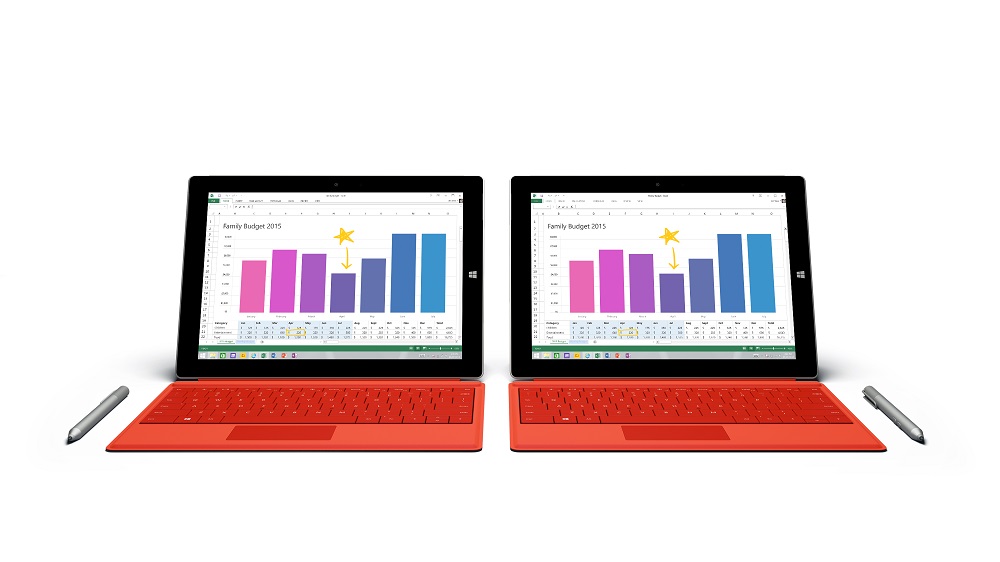Microsoft’s Xbox One entertainment console costs $499 and involves carrying around a television if you want to get some gaming going on the side. The company’s new Surface 3 2-in-1 isn’t an Xbox One in name, but it’ll make an impressive personal computer and conduit to Xbox Live soon.
The company announced the new Surface 3 in a post on its Surface Blog this past week out of nowhere. The Surface 3 is meant as a competitor to the iPad and a low-end notebook computer. Every Surface 3 includes a high-definition 10.8-inch touchscreen display, a rear-facing 8 megapixel camera with focus and a 3.5 megapixel front-facing web camera for video chatting and selfies. There’s a single full-size USB port, a docking port for connecting it to a $129 Surface Type Cover, and a micro-USB port for charging. This version is also compatible with the pressure sensitive Surface Pen that still comes included with the Surface Pro 3. (Previous versions of the Surface only charged through proprietary connectors.) Microsoft has added an extra position to the Surface 3’s built-in kickstand.
Two versions of the Surface 3 are coming to store shelves on May 5th. The first includes 2GB of RAM and 64GB of storage. The second includes 4GB of RAM and 128GB of storage. Two more versions are coming this summer with wireless LTE connectivity.
So what makes it a great portable Xbox? Microsoft confirmed this past January, and again this week that it plans on releasing its Windows 10 operating system to Windows 8 and Windows 8.1 users the world over for free. That software update will contain a new tablet mode that makes working with a 2-in-1 easier plus a dedicated Xbox client that gives users and video game developers complete access to Xbox Live services. Users will be able to stream games from their console to devices running Windows 10 too.
To be clear, Microsoft’s intention is to create a gaming ecosystem every bit as powerful and feature complete as its consoles, according to Xbox Head Phil Spencer. What’s more, at GDC 2015 Microsoft confirmed that a wireless dongle is coming to let Windows PCs communicate wirelessly with the Xbox One controller. Today users have to plugin a USB cable to get the two working.
